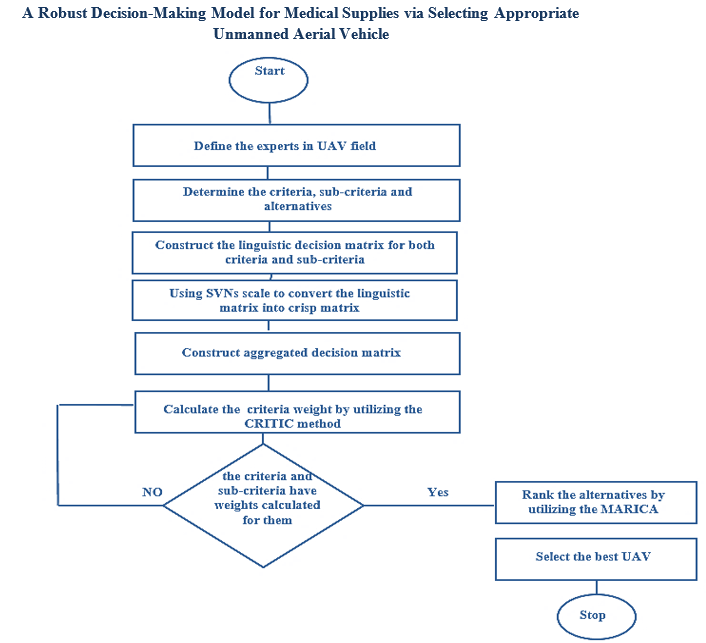A Robust Decision-Making Model for Medical Supplies via Selecting Appropriate Unmanned Aerial Vehicle
Main Article Content
Abstract
Recently, Unmanned Aerial Vehicles (UAVs) have been used in many fields, including the field of health care, especially in delivering the necessary medical equipment and supplies, due to the many advantages they have compared to other traditional methods and the presence of different types of UAVs, to improve healthcare and provide it with the medical supplies and equipment necessary to save the lives of patients. Choosing the appropriate UAV for a specific situation represents a problem facing decision-makers, which is considered a multi-criteria decision-making problem. Since the decision-making process is cumbersome and complex, and deals with uncertainty and ambiguity. In this research, we proposed multi-criteria decision-making (MCDM) model using CRITERIA (Criteria Importance through Intercriteria Correlation) and MARICA (Multi-Attribute Rating Analysis with Ideal Concepts) methods integrated with neutrosophic logic, which is considered a powerful tool in dealing with uncertainty and ambiguity. The CRITIC method calculates the weight of criteria, whereas it takes into account the correlations and relationships between the criteria, whether they are positive or negative, unlike other methods that consider the criteria separately, which allows for a more accurate and comprehensive analysis of the decision problem. The MARICA method is used also to rank the alternatives. It allows decision-makers to evaluate alternatives according to how well they perform across multiple criteria by considering several factors at once. This helps increase the effectiveness of judgments by taking into account all relevant factors. Moreover, MARICA is a user-friendly method that doesn't require complex mathematical calculations, making it accessible to anyone who wants to make sound choices. The UAV with the highest ranking is the one that will be chosen and represents the best among the alternatives. The proposed model proved its effectiveness by applying it to an experimental case.
Downloads
Article Details

This work is licensed under a Creative Commons Attribution 4.0 International License.





